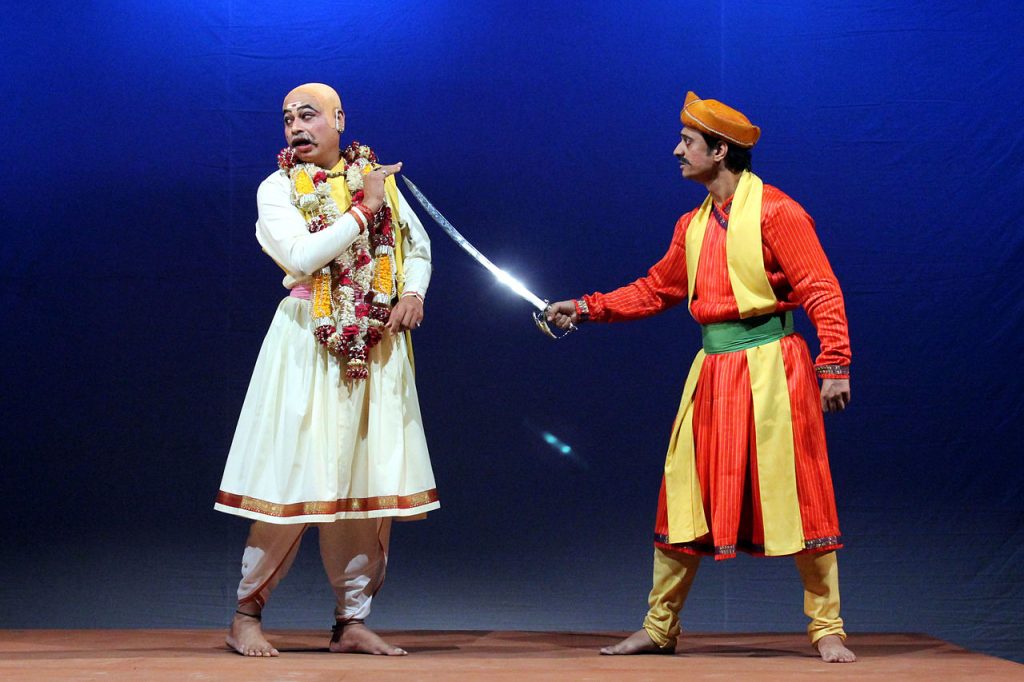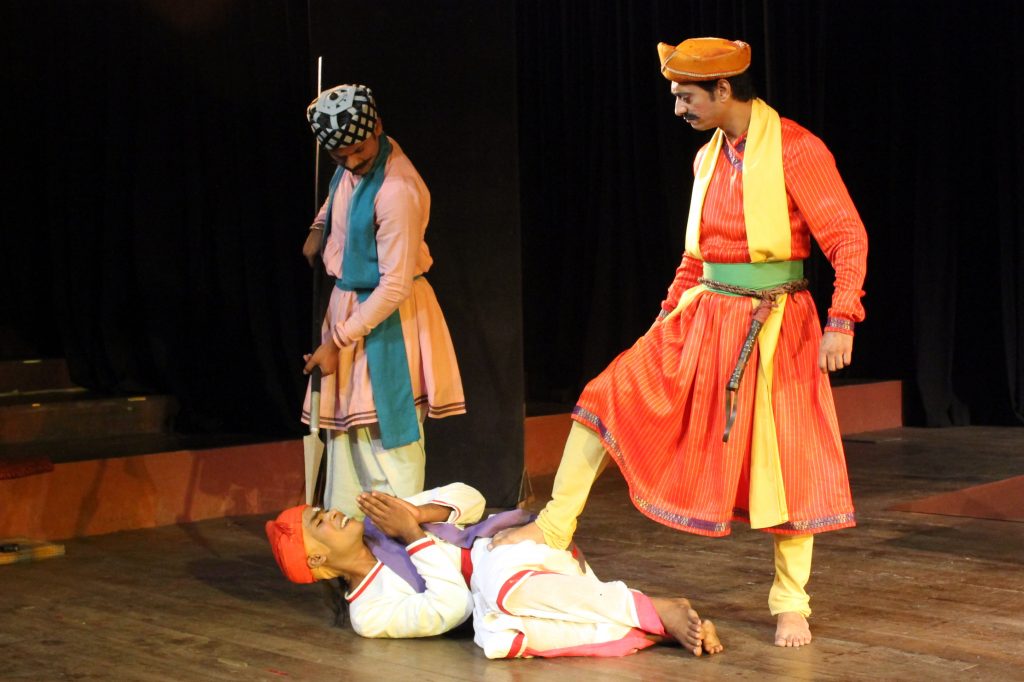The play was written half a century ago. It is rare for a work of theatre to be a perfect combination of style, content, historical relevance, contemporary value, social comment, political satire; Vijay Tendulkar’s Ghashiram Kotwal ticked all those boxes. Which is why it still stands the test of time, and fifty years of being among the list of Indian theatre masterpieces is no mean achievement.
A play comes to life when it is staged, and Ghashiram Kotwal, was first performed by the Progressive Dramatic Association (PDA) in 1972, but the 1973 production by Pune’s Theatre Academy (a breakaway group from the PDA), directed by Dr.Jabbar Patel, with Mohan Agashe and Ramesh Tilekar in the lead, remains a landmark.
By the time he wrote Ghashiram Kotwal, the iconoclastic playwright had already broken through the clutter of popular Marathi plays (musicals, mythologies, family dramas) of the time, with jolting plays like Gidhade (1961) Shantata! Court Chalu Aahe (1967) and Sakharam Binder (1972), among others, and earned a reputation for violence, taboo-smashing and disturbing realism. He was one of the heralds of what came to be known as the experimental theatre movement in India, a brave new world of thought and form. Still, when Ghashiram Kotwal hit the stage, the audience—and the political establishment—were gobsmacked.
Not written in his usual style that portrayed brute reality with colloquial dialogue, this historical musical-cum-political satire was set in the 18th century, building on the real-life character of a tyrannical police chief who was unleashed on Pune by the hedonistic Nana Phadnavis, an important minister in the court of the Peshwa. Ghashiram would probably have remained a footnote of history had an author, Moroba Kanhoba, not written a story about him, which became the starting point of the play by Tendulkar. The parallels between the events portrayed in the play and the rise of the Shiv Sena were not hard to see. Inevitably, there were protests (led by Shiv Sena leader Manohar Joshi), calls for a ban, court cases, attempts to stop the production from travelling abroad. (The cast and crew had to be smuggled into the Berlin-bound flight; with clouds of the Emergency hovering over the country, they were allowed by then Prime Minister Indira Gandhi to go abroad reportedly after the intervention of Satyajit Ray).

Tendulkar has been quoted in a piece by Ananya in feminisminindia.com as having said, “The inspiration for the play was a topical situation. I was working for Loksatta when the first major riots were launched in Bombay by the Shiv Sena. Bal Thackeray seemed an ordinary man, not at all the sort of person who would indulge in dare-devilry. The middle-class boys who followed him were not demons. In that particular situation, they acquired power, abused it and spread terror. I sensed that terror in my newspaper office. We were not free to write anything about the Shiv Sena. If the title “Senapati” was not prefixed to Thackeray’s name in a report, a morcha would be taken out with burning and looting. Actually, the Shiv Sena was deliberately fuelled by the ruling party to establish a force against the masses. Then came Krishna Menon and his election campaign when the Shiv Sena was pitted against the communists. You can see the similarity between the Ghashiram incident and this event to which we were witnesses. The hunting dogs got transformed into ferocious tigers and the Government began to fear them. When I saw this, I felt the urge to use this theme in a play and as I traversed backwards in history, I noticed that this was a repetitive pattern – such individuals and parties had been created through history. Hitler was one such example.”
The uproar against the play was also because it was perceived to be anti-Brahmin and derogatory towards Nana Phadnavis, who is considered a hero in Maharashtra because of his astute statesmanship and standing up to the British spreading their tentacles in India.
Using Marathi folk music and dance, and a robust ‘multi-purpose’ chorus, Tendulkar brought alive the story of a man who wormed his way into power and then misused it. The music by Bhaskar Chandavarkar and choreography by Krishnadev Mulgund greatly enhanced the production that was as entertaining as it was provocative, even though its historical veracity has been questioned.

Ghashiram Savaldas came from Kannauj to Pune, which is portrayed as Babylonian city of vice and depravity. The outsider to the Brahmin-dominated city just wants to make a living, but is falsely accused of theft and imprisoned. To take revenge, he uses his young daughter Gauri as a pawn to ensnare Phadnavis, a debauched exploiter of women, and become the police chief of Pune. He unleashes a rule of astounding brutality to avenge his humiliation. After a group of innocent men suffocate and die in prison, the Brahmins appeal to the Peshwa. His daughter dies too and it is time for Ghashiram’s downfall. Having outlived his usefulness to Phadnavis, he is publicly stoned to death by an enraged mob.
The ethos of the play is steeped in the culture of Maharashtra, but its many translations have worked across the country. What’s more, the gist of Tendulkar’s writing can be read as an allegory of how a population can be manipulated by an unscrupulous ruling establishment. There is also a note of caution built in– an autocratic regime can be overturned when the people revolt.
Ghashiram Kotwal has been the subject of innumerable studies and scholarly papers. A film was made on it in 1976, by a collective of experimental filmmakers. The beauty of the play is that it is as timeless as it is inimitable. Many have tried to blend folk form and contemporary content, but none with Tendulkar’s dexterity and intellectual rigour.



